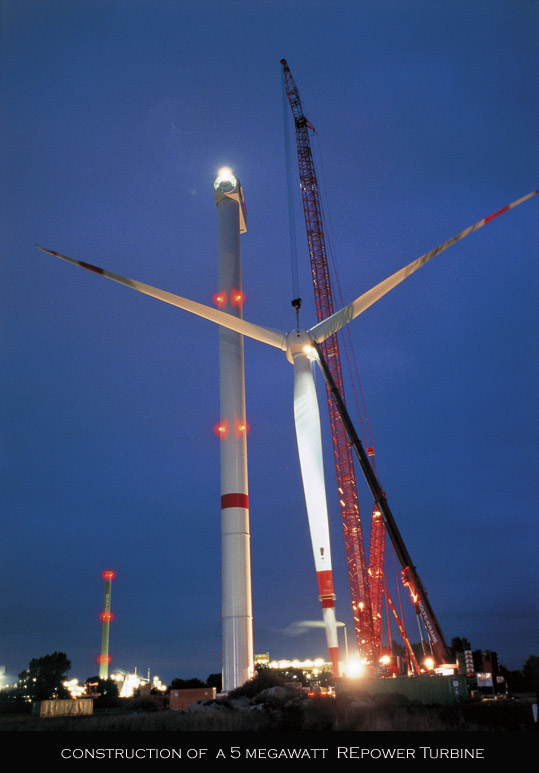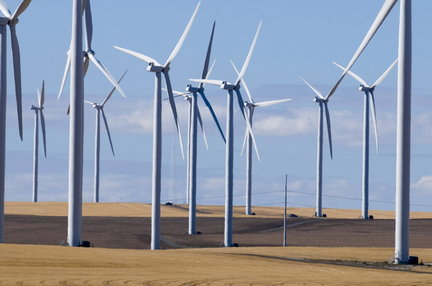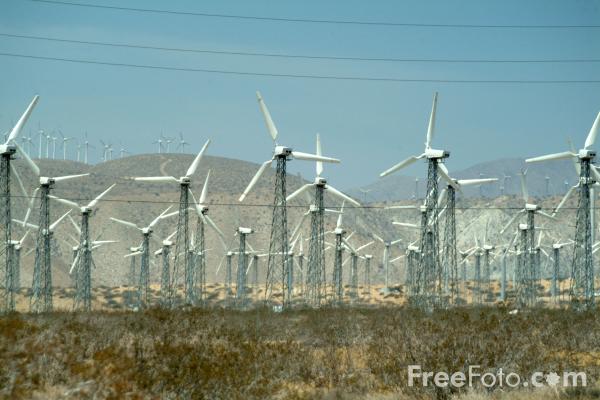Sep
5
Wind Energy: Just a Bunch of Hot Air?
Wind energy.
Electricity generated by the power of the wind.
It’s a cool idea. (Or, should I say “hot”?) Clean (i.e., no carbon emissions or other harmful waste products), natural and “renewable”. Presumably cheap, too. Yay! Every politician’s dream, especially those who are funded and/or pressured by the environmentalist lobbyists and other “green” groups. Of course, when you read or listen to those activists via the MSM, you don’t usually hear the other side of the equation, as it were.
Unreliability is a BIG concern. You just can’t rely on the wind to always be blowing, even when you build a wind farm in a normally windy place. Take Scotland, for instance, which has several wind farms responsible for producing 1588 megawatts (MW) of power. A recent study on the data from those farms from February through June of this year revealed some eye-opening facts.
- While the wind turbines are supposed to operate at an average output of about 30% of their maximum installed capacity, they under-produced 80% of the time.
- They were at less than 5% maximum output nearly a third of the time, sometimes for several days.
- Only 9 times did they actually reach 30% efficiency for a full day.
- In fact, average output for the 5-month period was only 17% of maximum — i.e., just over half of what is expected.
It’s not a serious issue, yet, but Helen McDade of the John Muir Trust expressed her worries about depending too much on the wind farms:
This raises serious concerns about security of supply…. What will the consequences be when we become more reliant on wind power, and switch off the other resources, such as the coal-fired power stations? I think vested interests and blind hope are the reasons we are careening down this route.”
To be fair, though, this study looked at just 5 months out of an admittedly unusually calm year. Plus, as Rosie Vetter of Scottish Renewables points out,
No single energy technology can meet all of our needs, which is why we need a mix of renewables and thermal generation in different locations linked by a strong grid, with enhanced capacity to store electricity so it can be released when it is needed.”
Nevertheless, I think this case study is sufficiently illustrative of the undependable nature of this particular energy source.
Let’s look at it from another perspective.
The Bonneville Power Administration (BPA) in the Pacific Northwest currently has 2780 MW generated from wind farms and is expected to more than double that amount by 2013. It has already integrated over 1000 turbines, 5 new substations, and 6 tap-lines to connect the new power sources into the electricity grid. The BPA has one of the highest ratios of wind power to overall load of any federal power marketing authority in the United States — closing in on 30%. As Todd Wynn and Eric Lowe of the Cascade Policy Institute recently reported, however, there are several issues related to integrating wind-generated energy into a region’s power grid.
Obviously, wind is unpredictable and inconsistent, creating a significant problem for BPA and electric utilities. The electricity grid must remain in perfect supply-and-demand equilibrium in order to guarantee that when a ratepayer flips a switch, a light turns on. To prevent brownouts or overloads on the grid, BPA must schedule energy production in advance. However, the ability to predict when and how hard the wind will blow is extremely limited (usually a two- or three-day window) and often inaccurate. These problems are exacerbated by the fact that BPA has to have a backup system, known as a balancing reserve capacity, equal to or greater than the wind power capacity utilized at any given time. Because wind power is so unpredictable, every MW of wind power must be backed up by an equal amount of reliable energy in reserve to replace the energy lost when the wind dies down. Otherwise, the grid becomes unreliable and service is interrupted. In Oregon and the rest of the Pacific Northwest, hydroelectric dams currently serve as the balancing reserve. This means hydroelectric dams are turned on and off in order to respond to fluctuations in wind generation. [Not very efficient. More on this in a minute.]
…The argument that wind power can help to meet future energy demand is erroneous, since wind energy does not add capacity to the grid. Wind power merely trades off with existing sources of production, which functionally means shutting down hydroelectric dams and building additional back-up generation facilities (essentially building two power plants for the energy of one)…. [While research & analysis is underway to address these problems, solutions] are generally far off, or would fail to address the problem completely. Therefore, BPA eventually will be forced either to buy additional dispatchable generation capacity from third-party suppliers or to build additional back-up capacity. This leads to additional costs for BPA, the utilities which purchase power from BPA, and ultimately Oregon ratepayers.”
That bit I italicized is well worth remembering. Speaking of additional costs, here is some more info:
In 2009, BPA requested that the Oregon Public Utility Commission (OPUC) allow an electricity rate increase to reflect the costs of integrating wind. BPA proposed an increase of $2.79 per kilowatt-month, and the OPUC set the final rate increase at $1.29…. The new rate represents a doubling of wind integration costs, and this rate will continue to increase as more wind energy is added to the grid. These additional costs are eventually passed on to Oregon ratepayers.
In addition, President and CEO of Portland General Electric (PGE) Jim Piro sent an e-mail to ratepayers on February 16, 2010 explaining the utility’s plans to request a rate increase which would have to be approved by the Oregon Public Utilities Commission. The rate increase proposed for 2011-2013 will raise the average household electricity bill $6.70 per month. According to Piro, these costs can be associated largely with state renewable energy mandates, such as finishing phase III of the Biglow Canyon Wind Farm.”
So much for energy savings from “renewable” power sources. But, we’re not done, yet. About those mandates Piro mentioned…
[O]ne of the main reasons why wind energy has expanded so quickly in Oregon is because the Oregon Legislature passed renewable energy mandates in 2007. These mandates force utilities, and ultimately ratepayers, to purchase a certain percentage of renewable power by a certain year. The main goal is to have 25% new renewable energy on the grid by 2025. This effectively creates artificial demand, and wind power developers must build wind farms to meet this demand. Additionally, subsidies for production, as well as lucrative state tax-incentives, create multiple levels of artificial support for wind power.”
Is it any wonder that oil tycoon T. Boone Pickens, global warming activist Al Gore, speculator/investor & liberal activist George Soros, and others see a great opportunity to make new fortunes in the wind energy business? Of course, I’m not against making an honest buck when such an opportunity arises. My concern is with the reliability of the source and the viability of the technology to make it worthwhile to the end users — i.e., you and me. I also hate to see people tricked into thinking something is a “solution” or, at least, of much greater benefit than it really is. (Note: It seems Pickens has had some setbacks on this front and is shifting his focus to natural gas.)
Wynn and Lowe conclude that:
Forcing Oregonians to purchase an energy source with so many associated costs is unwise. At best, wind power simply replaces a clean, reliable and affordable source of energy: hydroelectricity. At worst, it invites increased price volatility, increased rates and the prospect of more greenhouse gas-emitting facilities. Ultimately, mandating increased wind generation leads to financial burdens on businesses and individuals across the state that ought to be considered carefully.”
If you don’t live in Oregon, you may be thinking this isn’t much of an issue for you. But, many (30?) states have issued or are considering similar mandates for their utilities. California, for example, will require that renewable energy sources produce 33% of its electrical power by 2020. Unfortunately, there is yet another wrinkle to impede this noble cause.
Remember how the predicted major reductions in carbon emissions was such a huge selling point for wind power? Well, several new studies have concluded that the actual reductions from wind-generated electricity will be rather negligible. As reported in the Wall Street Journal by the Manhattan Institute’s Robert Bryce and written about in his new book, Power Hungry: The Myths of “Green” Energy and the Real Fuels of the Future, the cycling up and down of conventional coal- or gas-fired generators to compensate for erratic winds is rather inefficient. These generators are designed for continuous operation, so intermittently powering them on & off increases both fuel consumption and carbon emissions. According to Bryce, the aforementioned, recent research strongly indicates that this effectively cancels out any projected reductions.
[The summary I read didn’t mention anything about hydroelectric dams, as in the Oregon example above, but I can’t imagine ramping them up and down any more than absolutely necessary is a good idea, either.]
The Independent Petroleum Association of the Mountain States commissioned Bentek Energy to analyze Colorado and Texas power plant records. Despite sizable investments, Bentek concluded, wind power “has had minimal, if any, impact on carbon dioxide” emissions. Thanks to the cycling of Colorado’s coal-fired plants in 2009, at least 94,000 more pounds of CO2 were generated because of the repeated cycling. In Texas, there was an estimated, relatively small reduction (~600 tons) of CO2 in 2008 and a slight increase (~1000 tons) of CO2 in 2009.
Some of you may remember that the Waxman-Markey energy bill, which narrowly passed the House last year, included the goal of eventually having 25% of the nation’s electricity produced by renewable energy sources. According to the U.S. Energy Information Administration (EIA), the best-case scenario is about 306 million tons less CO2 by 2030. With the estimated annual U.S. carbon emissions being roughly 6.2 billion tons that year, the expected reduction will only be around 4.9% of emissions nationwide. That’s only a fifth what the Waxman-Markey bill put forth. And it’s certainly not much when you consider that the Obama administration wants to cut CO2 emissions 80% by 2050.
Frankly, I think the powers-that-be need to be much more realistic in their expectations, in terms of what can be done, by when, and how. (It would help if they weren’t being influenced/pressured by the climate change alarmists.) Granted, my knowledge on the subject is fairly limited. But, I still think it is safe to say that the more reliable, proven energy alternatives that should be focused on are natural gas, hydroelectric, clean coal, and definitely nuclear fission. If some billionaire gave me some money to invest in energy production, I would put it in one or more of those areas (after due diligence research, of course). No question.
Wind power? It might suffice for small, agrarian communities. But, for our modern, energy-ravenous society, it just doesn’t cut it. In fact, it “sucks”.



















